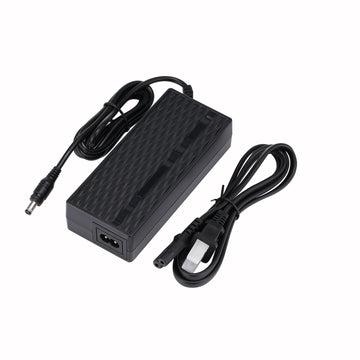
Electric bikes are reshaping the way we think about cycling, providing a seamless fusion of pedal power with a battery-driven boost. This article can be your go-to resource if you're intrigued by how these machines make climbing hills feel like a breeze or how they're transforming the eco-friendly transportation landscape. Get ready for a clear, no-nonsense look at the science behind e-bikes that's accessible to everyone.
Explore the mechanics of electric bikes with us as we explain the pivotal roles of the motor, the battery, and the controller. This article is for those pondering an investment in greener commuting options or the cycling enthusiast keen to understand the latest technological advancements. Stay with us as we discuss the essentials of e-bike operation and learn about the seamless integration of electricity and endurance in the world of personal transportation.
Cruise the boulevards and boardwalks in comfort with our stylish electric cruiser bikes, where laid-back design meets modern electric power for the ultimate relaxed ride.
What are Electric Bikes?

Electric bikes, also known as e-bikes, are bicycles that use an electric motor to assist with pedaling. They are becoming increasingly popular due to their ability to make cycling easier and more enjoyable. In this section, we will discuss the key components of an e-bike and how they work.
E-Bike Parts
An e-bike consists of several key components that work together to provide electric assistance while pedaling. These components include:
-
Electric Motor: The electric motor is the heart of an e-bike. It provides power to assist with pedaling and is usually located in the hub of the rear wheel, in the mid-drive, or at the front wheel. The motor can be controlled by a controller, which regulates the amount of power that is delivered to the motor.
-
Battery: The battery is the power source for the electric motor. It is usually located on the frame of the bike and can be charged like any other electronic device. The capacity of the battery determines the range of the e-bike.
-
Controller: The controller is responsible for regulating the amount of power that is delivered to the motor. It is usually located on the handlebars and can be adjusted to control the amount of assistance that is provided.
-
Throttle: The throttle is used to control the speed of the e-bike. It is usually located on the handlebars and can be used to provide instant power without pedaling.
-
Sensors: Sensors are used to detect the speed and torque of the pedals. This information is used by the controller to regulate the amount of power that is delivered to the motor.
-
Display: The display is used to show information such as speed, distance, and battery level. It is usually located on the handlebars and can be used to adjust the settings of the e-bike.
How Do E-Bikes Work?
When you start pedaling an e-bike, the sensors detect the speed and torque of the pedals and send this information to the controller. The controller then regulates the amount of power that is delivered to the motor based on the settings that you have chosen. This power is delivered to the motor, which provides assistance while pedaling.
You can control the amount of assistance that is provided by adjusting the settings on the controller. Some e-bikes also have a throttle that can be used to provide instant power without pedaling. The battery provides power to the motor and can be charged like any other electronic device.
Electric Bike Power System
Electric bikes rely on a power system that includes a battery and a motor. The battery provides the electrical energy to power the motor, which in turn propels the bike forward. Here are some key elements of the power system:
Battery Technology
The battery is the heart of the electric bike's power system. Most electric bikes use rechargeable lithium-ion batteries, which are lightweight, durable, and provide high energy density. The capacity of the battery is measured in watt-hours (Wh), which is the amount of energy the battery can store. The higher the watt-hour rating, the longer the battery will last before needing to be recharged.
Motor Types
There are two main types of motors used in electric bikes: hub motors and mid-drive motors. Hub motors are located in the center of the wheel and provide direct power to the wheel. Mid-drive motors are located near the pedals and use a chain to transfer power to the wheel. Mid-drive motors are generally more efficient than hub motors and provide better performance, especially when climbing hills.
Energy Efficiency and Range
The energy efficiency of an electric bike is determined by how much energy the motor consumes to propel the bike forward. The efficiency is measured in watt-hours per mile (Wh/mi). The range of an electric bike is determined by the battery capacity and the energy efficiency of the motor. A higher-capacity battery will provide a longer range, while a more efficient motor will use less energy and provide a longer range.
Take your cycling adventures off the pavement with our robust off-road electric bikes, engineered to power through rough terrain and bring excitement to your outdoor exploration.
Riding Mechanics
When riding an electric bike, there are two main ways that you can control the level of assistance that you receive: pedal-assist and throttle control.
Pedal-Assist and Throttle Control
Pedal-assist systems use torque sensors or pedal-activated systems to detect when you are pedaling and provide an extra boost of power to help you maintain your speed. Some electric bikes also come with a throttle control, which allows you to control the level of assistance without pedaling.
Assistance Levels and Cadence
Most electric bikes come with multiple levels of assistance, which you can adjust depending on your needs. The level of assistance determines how much power the motor provides and how much work you need to do to maintain your speed.
Cadence is also an important factor to consider when riding an electric bike. Cadence refers to the speed at which you are pedaling, and it can affect how much assistance you receive from the motor. If you pedal too slowly, you may not receive as much assistance as you would if you were pedaling faster.
Design and Customization
E-Bike Frames and Weight
When it comes to electric bikes, the frame and weight of the bike are important factors to consider. Electric bikes are designed to be heavier than traditional bikes because of the motor, battery, and other components that are required to power the bike. However, the weight of the bike can vary depending on the model and components used.
The frame of an e-bike is also an important consideration. Most e-bikes have a step-through frame, which makes it easier to get on and off the bike. However, some models have a traditional bike frame. When choosing a frame, it's important to consider your fit and comfort level. You want to make sure that the bike fits you well and is comfortable to ride.
Customizing Your Ride
One of the benefits of e-bikes is that they offer a lot of options for customization. You can choose from a variety of components, such as the motor, battery, and display. You can also choose from a range of accessories, such as lights, racks, and fenders.
When customizing your e-bike, it's important to consider your needs and preferences. For example, if you plan to use your e-bike for commuting, you may want to choose a motor and battery that offer a longer range. If you plan to use your e-bike for off-road adventures, you may want to choose a motor and battery that offer more power.
Practical Considerations

When considering purchasing an electric bike, there are some practical considerations that you should keep in mind to ensure you get the most out of your investment.
Safety and Legal Regulations
Electric bikes are subject to different safety and legal regulations depending on the country you are in. In the US, for example, electric bikes are classified into three categories based on their top speed and power output. It is important to check your local regulations before purchasing an electric bike to ensure that it is legal to ride on public roads and paths. Additionally, it is important to wear proper safety gear such as a helmet and reflective clothing when riding an electric bike.
Maintenance and Care
Just like any other bike, electric bikes require regular maintenance and care to ensure they perform optimally. You should check the battery regularly and charge it as needed. It is also important to keep the chain lubricated and the brakes adjusted. You may also want to consider taking your electric bike to a professional for regular maintenance and repairs.
When it comes to the battery, it is important to note that it will eventually need to be replaced. The lifespan of the battery will depend on factors such as usage, temperature, and storage. It is important to follow the manufacturer's recommendations for battery care to ensure it lasts as long as possible.
In terms of price, electric bikes can be more expensive than traditional bikes, but they can also save you money in the long run. They require less effort to ride, which can save you money on transportation costs. Additionally, they can be a great option for commuting or exercise, which can also save you money on gym memberships or gas for your car.
Adapt to any environment with our convenient folding e-bikes, offering a compact form factor for easy storage and transport, perfect for the commuter or traveler on the move.
Conclusion
Electric bikes are more popular than ever, and it's easy to see why: they help you go further and faster with less effort. We've guided you through how the motor, battery, and controller work together to give you that extra push when you're pedaling. Whether you're riding to work or just out for fun, e-bikes are a smart choice for anyone looking to get around without a car.
Thinking about getting an e-bike of your own? Check out a variety of electric bikes that fit your style and needs. There's a whole world to explore, and an electric bike can help you see it all. Give it a try!
Frequently Asked Questions
Do you still have to pedal an electric bike?
Yes, you do. The motor on an electric bike is designed to assist you as you pedal, not to replace pedaling altogether. You can adjust the level of assistance provided by the motor to make pedaling easier, but you still need to pedal to make the bike move.
Can you go uphill on an electric bike without pedaling?
No, you cannot. Even with the motor on full power, you still need to pedal to make the bike move uphill. However, the motor can make pedaling uphill much easier by providing additional power to the pedals.
Can you ride an ebike with the power off?
Yes, you can. An electric bike can be ridden just like a regular bike if the motor is turned off. However, the bike will be heavier than a regular bike due to the added weight of the motor and battery.
Do electric bikes charge themselves while pedaling?
Some electric bikes are equipped with regenerative braking, which allows them to recharge slightly while you ride, particularly during braking. However, this feature is not common, and the amount of charge gained is minimal.
Should I charge my ebike every night?
You should charge your electric bike battery after every ride, or at least once every few days, depending on how often you ride. You don't need to charge the battery every night unless you use the bike heavily every day.
What charges an electric bike?
An electric bike is charged using a charger that plugs into a standard wall outlet. The charger is typically included with the bike and can charge the battery in a few hours.












































